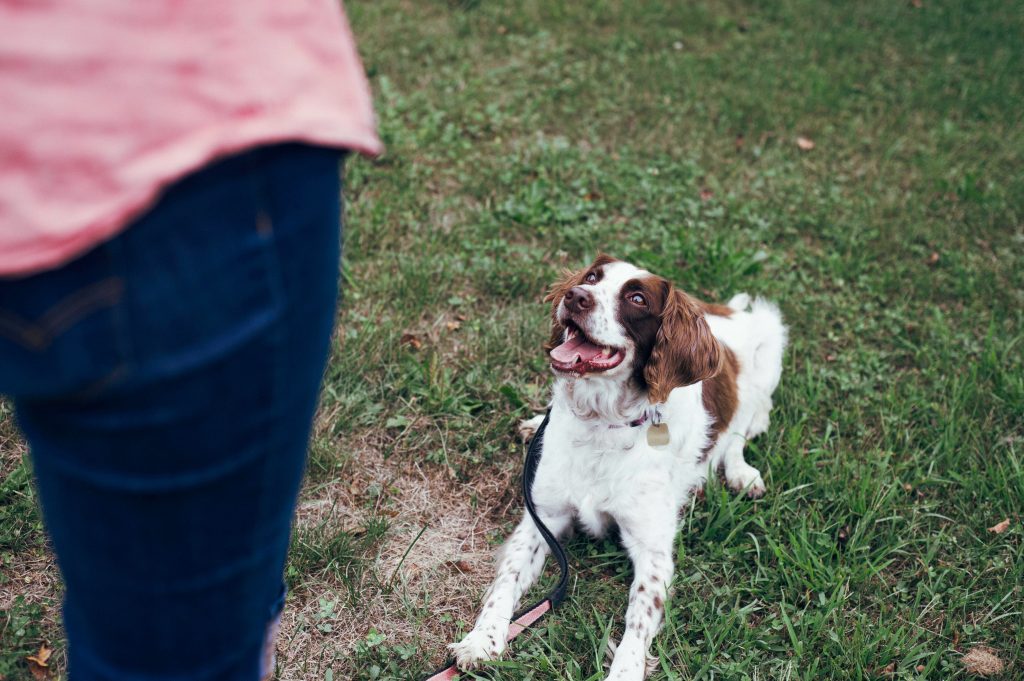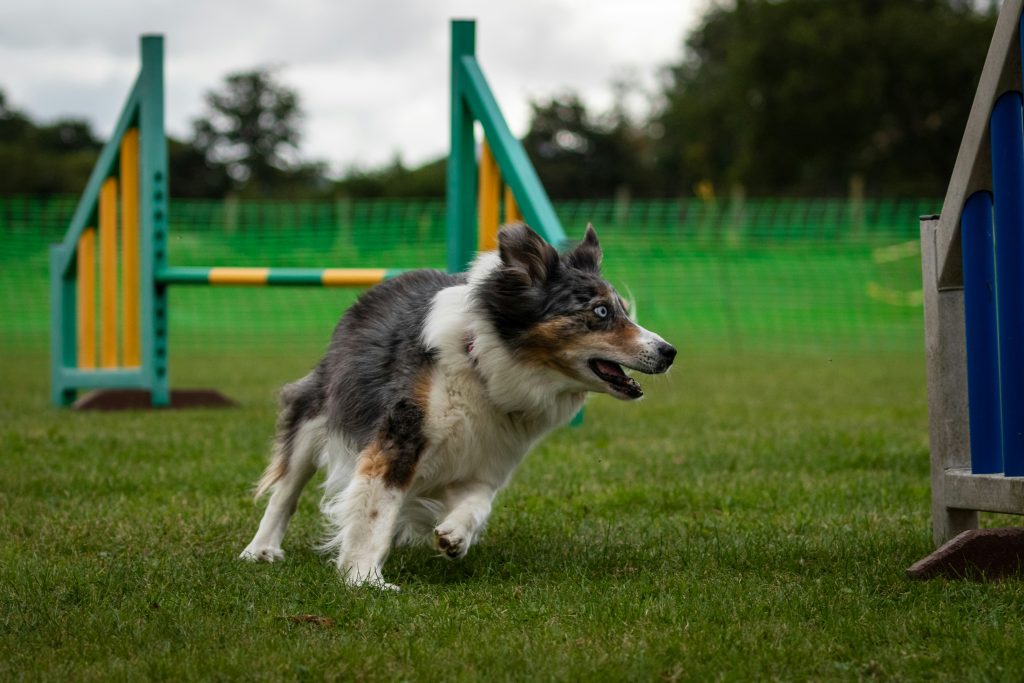The Science Behind It: Why Training Boosts Your Dog’s Brain and Builds Resilience
When we think about training our dogs, we often focus on the external benefits—improved behavior, better obedience, and a stronger bond between pet and owner. But have you ever wondered what’s going on inside your dog’s brain during training?
Training is not just a tool for teaching commands; it’s also a powerful way to stimulate your dog’s mind, build resilience, and improve their mental well-being. Understanding the science behind how training affects your dog’s brain can help you appreciate just how beneficial it is—both for their behavior and for their overall confidence.
In this blog, we’ll take a closer look at the neuroscience of dog training and how it can help build a more confident, well-rounded dog.
How Dogs’ Brains Work: A Quick Overview
Before we delve into how training impacts your dog’s brain, it’s important to understand how their brains function. While dog brains are structurally similar to human brains, they have some key differences.
Dogs have smaller brains than humans, but their brains are incredibly efficient at processing and responding to stimuli. A dog’s brain is designed to help them survive and thrive in a variety of environments, and it’s highly responsive to emotional cues, social interactions, and external stimuli. This is why dogs are such attentive learners—everything they experience can have an impact on their behavior.
The dog brain is largely focused on survival instincts, but it also has a remarkable ability to learn, adapt, and build new connections. That’s where training comes in—it taps into this ability and helps shape your dog’s behavior in positive ways.
The Brain’s Reward System: Why Positive Reinforcement Works
One of the key ways that training builds confidence in your dog is through the brain’s reward system. Just like humans, dogs have a complex system that releases “feel-good” chemicals (such as dopamine and serotonin) when they experience something rewarding or pleasurable. These chemicals help reinforce certain behaviors, making it more likely that your dog will repeat them in the future.
When you reward your dog with treats, praise, or play for performing a behavior correctly, you’re essentially activating this reward system. Over time, your dog’s brain begins to associate the act of training with positive outcomes. This not only reinforces good behavior but also increases your dog’s confidence in their ability to succeed.
This is the reason why positive reinforcement training is so effective. Instead of focusing on punishment or negative feedback, you’re building a positive learning experience that encourages your dog to repeat good behaviors.
Neuroplasticity: How Training Helps Build a Resilient Brain
Neuroplasticity is the brain’s ability to form and reorganize new neural connections in response to learning and experience. Dogs, just like humans, have neuroplasticity, which means that their brains are capable of adapting and changing based on what they learn.
When you engage in training with your dog, you’re helping to strengthen and develop their neural pathways. Each time your dog learns something new, whether it’s a command like “sit” or a behavior like walking calmly on a leash, their brain forms new connections. The more consistent and frequent the training, the stronger these pathways become.
Training not only helps dogs learn commands but also improves their ability to cope with new experiences and challenges. Over time, as your dog builds new neural connections, they become more adaptable and resilient. This means that dogs who engage in regular training are better equipped to handle new situations, face challenges with confidence, and recover from setbacks.
How Training Reduces Stress and Anxiety
In addition to boosting confidence, training can have a profound impact on your dog’s emotional well-being. Dogs who are not mentally stimulated or given clear boundaries may become stressed, anxious, or bored. This can lead to unwanted behaviors like chewing, barking, or even aggression.
Training provides structure and purpose, which helps reduce stress and anxiety in dogs. When your dog knows what’s expected of them and receives consistent positive reinforcement, they are less likely to feel overwhelmed or confused. This sense of predictability creates a calming effect, which helps lower stress levels.
Furthermore, training can provide an outlet for your dog’s energy. Mental exercise is just as important as physical exercise, and dogs who are mentally stimulated are less likely to become bored or develop anxiety-driven behaviors. Regular training sessions give your dog a focused activity that helps them use their energy in productive ways, leading to a more relaxed and confident dog.
Building Emotional Resilience Through Training
Emotional resilience refers to your dog’s ability to cope with stress, change, and challenging situations. Dogs who are not emotionally resilient may react to stress with fear, anxiety, or even aggression. However, training can help build this resilience over time.
By consistently exposing your dog to controlled challenges during training, you’re teaching them how to handle stress in a constructive way. For example, if your dog is fearful of other dogs, gradual exposure through training can help them learn how to interact with other dogs without becoming overwhelmed. By rewarding calm behavior and helping them build positive associations, you’re teaching your dog how to cope with stressors in a healthy way.
Emotional resilience also comes from the bond you build with your dog through training. When dogs feel supported by their owners and trust that their humans will guide them through challenges, they are more likely to approach new experiences with confidence rather than fear.
Training Enhances Socialization and Confidence
Training isn’t just about teaching commands—it’s also an essential tool for socialization. A well-socialized dog is one who can confidently navigate new situations, meet new people, and interact with other animals in a calm and controlled manner.
Dogs who are not properly socialized may develop fear or aggression toward new people, dogs, or environments. Training provides an opportunity to introduce your dog to these new experiences in a controlled and positive way, which helps build confidence.
Socialization through training also encourages your dog to view the world as a safe place, which reduces anxiety and fear. The more experiences your dog has in a positive, structured training environment, the more confident and well-adjusted they will become in real-world situations.
How to Maximize the Benefits of Training
To get the most out of training and ensure it’s having a positive impact on your dog’s brain and confidence, here are some tips:
-
Keep Training Sessions Short and Fun: Dogs have limited attention spans, so it’s important to keep training sessions short (10–15 minutes) and engaging. End each session on a positive note to leave your dog feeling confident and accomplished.
-
Consistency is Key: Regular, consistent training helps reinforce learning and strengthen neural connections. Try to incorporate training into your daily routine, even if it’s just for a few minutes each day.
-
Challenge Your Dog Gradually: Just like humans, dogs grow when they’re challenged—but only when the challenge is manageable. Gradually increase the difficulty of tasks as your dog becomes more confident in their abilities.
-
Celebrate Small Wins: Every time your dog succeeds—whether it’s learning a new command or staying calm in a stressful situation—celebrate their success with treats, praise, or play. This boosts their confidence and strengthens the positive association with training.
Final Thoughts
Training isn’t just about teaching your dog to behave; it’s a powerful tool for boosting their brainpower, building resilience, and enhancing their confidence. By engaging your dog in regular training, you’re helping to strengthen their neural pathways, reduce stress, and build emotional resilience—all of which contribute to a more confident and well-adjusted dog.
The science behind dog training shows us that our dogs are capable of far more than we may realize. By investing time in training, you’re investing in your dog’s mental and emotional well-being—and that’s something that will pay off in every aspect of your life together.



